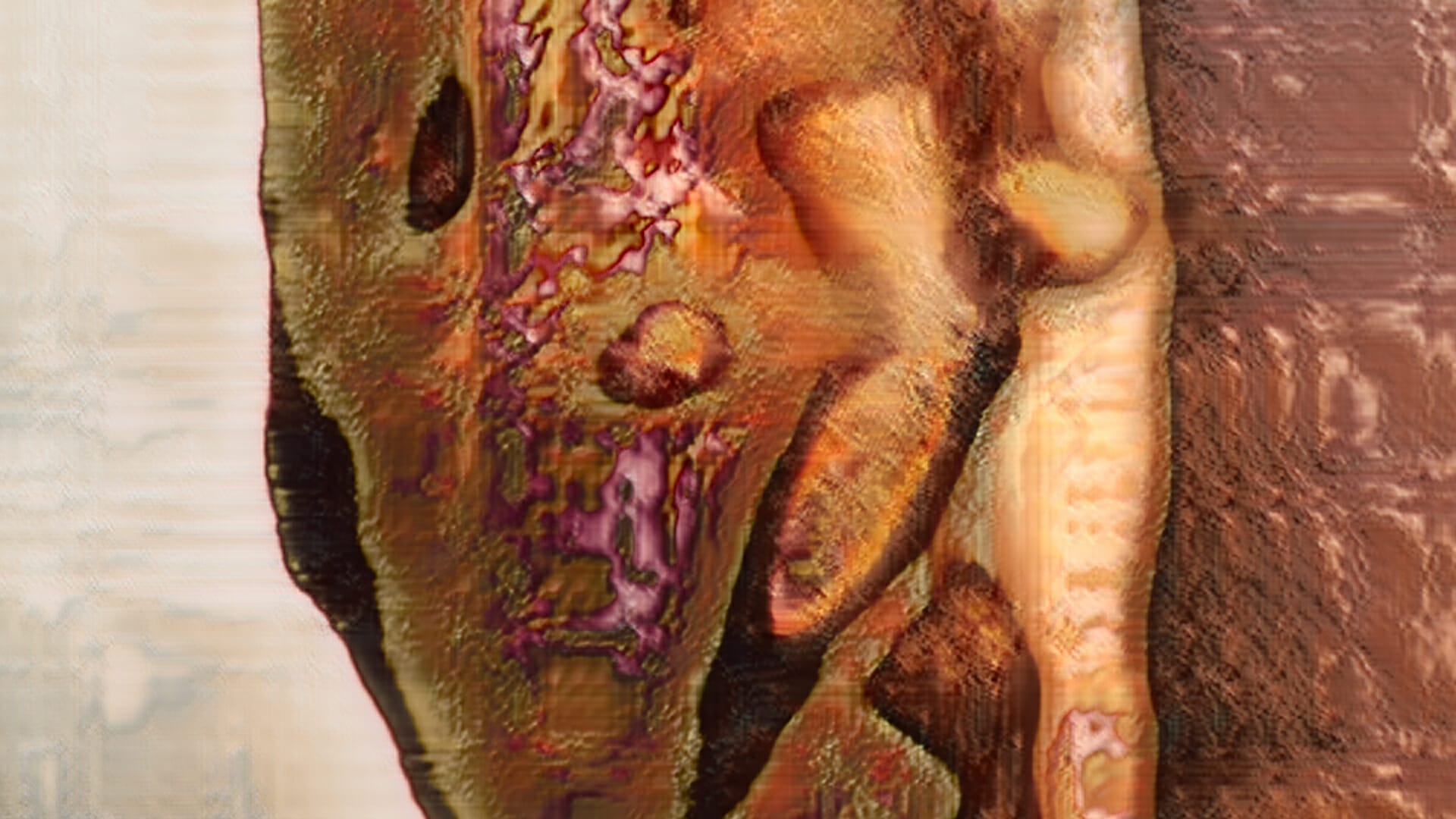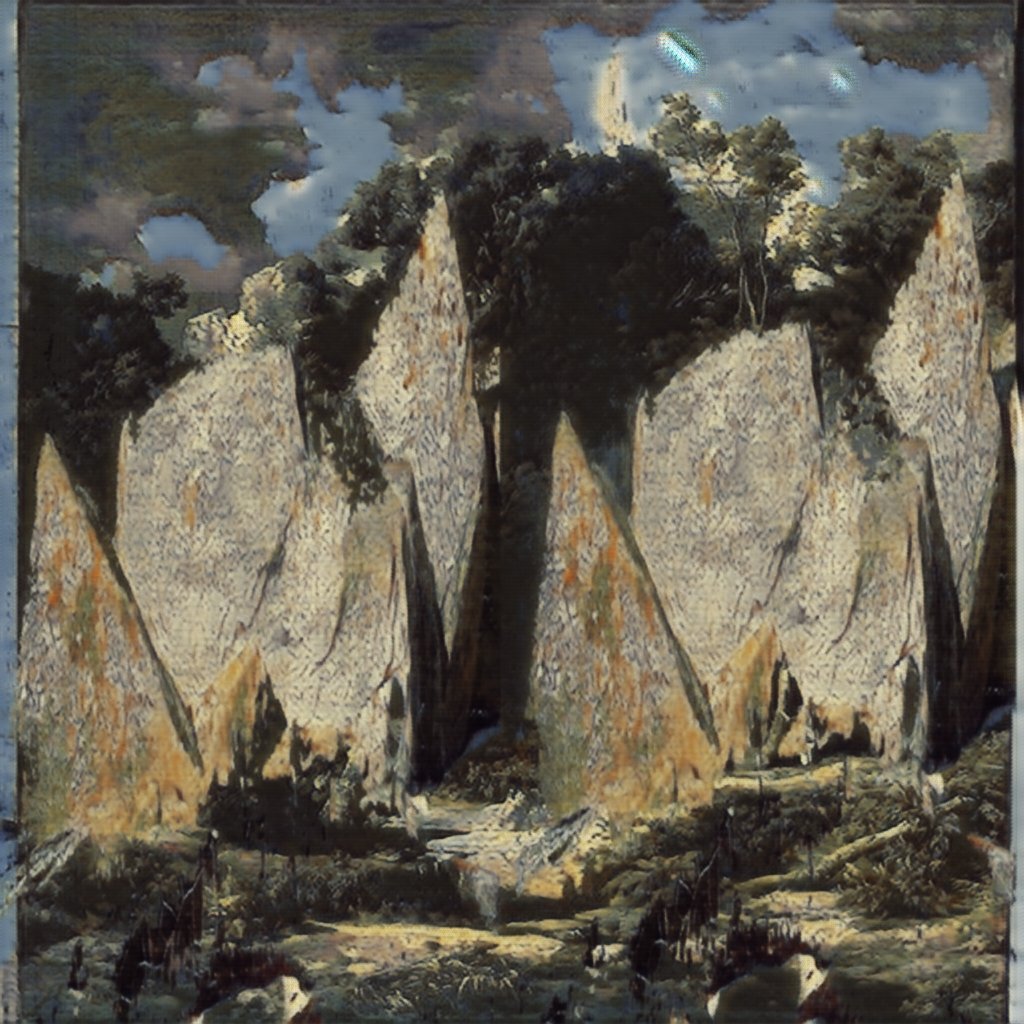
Robbie Barrat: Unmasking ‘The Lost Robbies’
In the fast-paced world of AI-generated art, Robbie Barrat ‘s “AI Generated Nude Portrait #7 Frame #111” recently sold in July 2023 for a staggering 175.0 ETH ($343,761.25) on SuperRare, leading to animated debates about the inherent value of such works. Opinions varied, with some disputing the aesthetics, while others probe the philosophical depths, questioning the value of AI-generated art itself.
Now that the heated debates have cooled down, let’s examine the facts.
GANs & Artistic Vision: Robbie Barrat ‘s Creative Journey
Robbie Barrat, born in Dublin in 1999 and raised in West Virginia, is a digital artist who is well-known for his GAN-generated works. Upon graduating high school, in 2017 Barrat delved into the technological realm, contributing at NVIDIA and further exploring his interests as a researcher in a bioinformatics lab at Stanford University. However, his unyielding passion for the arts led him across the Atlantic to Europe, where he enrolled in art school and embarked on a journey as a full-time artist.
Using machine learning and Generative Adversarial Networks (GANs), Barrat ventured into an array of domains, including fashion, architecture, and art history. Fueling his creative vision, to him AI serves as both an art form and a tool, stimulating his curiosity with its potential for misinterpretation of training material.
For this very reason his initial works were defined by a thoughtful exploration of AI as both a tool and subject matter, with pieces sought to contextualize the role of an artist employing AI within the broad tapestry of art history.
Over time, Barrat’s approach has evolved with his more recent creations incorporating AI as a component within a wider creative process, moving away from AI as the exclusive subject matter. Having experimented with machine learning and GANs (generative adversarial networks) in 2018, his early explorations led him to produce a series of 300 AI-generated nude art portraits that have since become some of the most sought-after pieces in existence — The Lost Robbies.
From Christie’s Tech Summit to Digital Enigma: Tracing the Path of “The Lost Robbies”
During a historical time when the blockchain component in digital art had yet to become a well-known phenomenon in the traditional art world, on July 17th 2018, Christie’s hosted its first-ever Tech Summit in London, shortly after the NFT marketplace SuperRare had launched.
As such SuperRare was invited on behalf of Christie’s to take part in the event to support in demystifying AI art while promoting their platform. A partnership which led to the enlisting of Robbie Barrat, the very first artist to tokenize art on the SuperRare, and Jason Bailey, its first collector, to create artwork consisting of 300 frames minted and added to redeemable ETH gift cards for the attendees of the event.
Having experimented with machine learning and GANs (generative adversarial networks) since 2018, Barrat’s early explorations led him to produce “AI Generated Nude Portrait #7” — a series of 300 AI-generated nude art portraits for the occasion, each sold individually on-chain as 300 (1/1) frames, part of one unique artwork.
He used a machine learning technique called DCGAN, training a neural network on over 250,000+ images from WikiArt, and prompted it to produce paintings that emulate specific genres and time periods. What began as a quirky experiment producing deformed human shapes has now matured into an AI capable of generating pieces nearly indistinguishable from human-created works.
However most of the attendees did not comprehend either the intricacy of the creative process of this creation, nor the importance of this cultural-historical moment would represent for the art scene, never redeeming 288 frames, better-known today as “The Lost Robbies”.

The Unforeseen Resonance: AI, NFTs, and the Artistic Zeitgeist
The phenomenon of “The Lost Robbies” reveals an impactful layer of contemporary discourse, revealing the profound confluence of AI, NFTs, and the world of art. This fusion has triggered a seismic shift in the art world’s foundations, somewhat analogous to the reverberating influence of Marcel Duchamp’s “Fountain” in its time.
The comparison between Robbie Barrat ‘s work and Marcel Duchamp’s “Fountain” is grounded in how both artists challenged prevailing perceptions of art during their respective times. Duchamp, with his “ready-made” urinal, disrupted the traditional conception of art as something that required classic artistic skills (like painting or sculpture), and provoked a discussion about the very nature of art and the role of the artist in its creation.
Similarly, Barrat’s AI-generated art disrupts traditional notions of what constitutes art in the digital age. Just as Duchamp leveraged an everyday object to create his work, Barrat leverages artificial intelligence, a tool not traditionally associated with artistic creation. In doing so, he brings into question the role of AI in the creative process and who should be credited for AI-generated art – the AI as a tool, the artist who trained the AI, or a combination of both.
In essence, Barrat’s early work demanded us to not only reevaluate our understanding of what constitutes “art”, but to also examine the nuances of the tools and technologies that make it possible. An exploration that expands our connection with the artwork, enabling us to appreciate it in all its complexity, including the creative process, the nuances of its form, and the socio-technological context of its creation.
The Debate Unraveled: Controversies Surrounding “The Lost Robbies”
What exactly lies at the heart of the criticism surrounding “the Lost Robbies”?Firstly, the aesthetics— many Twitter users have responded negatively to the piece, especially when it comes to its visual appeal.
Secondly, the argument that the artwork lacks inherent artistic value and is primarily driven by hype and potential financial gain. This issue had already been brought up in the past when an artist collective, Obvious, used Barrat’s code to create “Portrait of Edmond Belamy“, igniting an ongoing, heated debate: who should rightfully receive credit and financial reward for AI-generated art?
On the other hand a major part of the critique pertains to the idea of scarcity. Many argue that the artwork’s value is increasingly tied to its historical context, unique narrative, and rarity, more than the quality or essence of the artwork itself.
In stark contrast, Barrat’s intentions, as conveyed through various online interviews, seem to diverge from these criticisms. He emphasizes his exploration of AI as a medium, using it to create images that embody qualities of traditional nudes, albeit without their overall structure. The distortion in the figures is not an artistic shortcoming, but rather a reflection of his experimentation with the medium.
Regrettably, much of the criticism does not address the artistic merit of the work itself, but is instead fixated on the elusive “Lost Robbies” and their associated market value.
In contrast, Barrat’s intentions, as revealed from online interviews, seem to diverge from these criticisms. In the end, these artworks represented his personal exploration into AI as a medium, especially at a time when hard coding was required — Added to the NFT component.
“I don’t want people to think that I still am actively involved with NFTs. I don’t plan on making any more until the environmental / speculative aspects of the space change (if ever)”
___Robbie Barrat
https://twitter.com/videodrome/status/1379198909373894656?s=20
I'm glad that this old story is getting attention; since it's funny
— Robbie Barrat (@videodrome) April 5, 2021
but I don't want people to think that I still am actively involved with NFTs. I don't plan on making any more until the environmental / speculative aspects of the space change (if ever)https://t.co/Aiop09FLMX
Moreover, Barrat’s 2021 statements also reveal a marked shift in his perspective on NFTs and the digital art space: while initially excited by the opportunities that blockchain offered for digital artists, Barrat mentioned how he’d lost interest in the NFT market due to its environmental impact and speculative nature, ultimately leaving the space.
In particular Barrat specified how the speculative nature of the NFT market transformed the perception and discussion of his work. In his opinion, the emphasis had shifted from the artistic merit of his pieces to their market value, resulting in his first tokenized nude portrait no longer being considered art, but rather a “SuperRare genesis token”.
Nevertheless, Robbie Barrat also mentiones how he didn’t regret experimenting with NFTs, and how he may someday return, should certain dynamics change.
The Final Frame: Deconstructing the Legacy of “The Lost Robbies”
In essence, the 300 frames that constitute the “Lost Robbies” are far more than mere “gifts”. They represent Barrat’s creative journey at a time when he was exploring the potential of AI and GANs as artistic tools. This exploration, and the resulting distortions, are intrinsic to the medium, reflecting a pioneering creative process rather than a deficiency in artistic value.
It can be said that the story of “The Lost Robbies” therefore embodies the multi-faceted and occasionally contentious world of AI-generated art, where the tension between artistic intent and public interpretation, between the aesthetics of a piece and its market value, continues to fuel discussions on the essence of art itself.
These narratives and controversies help us chart the course of digital art and NFTs. With discussions about the value and authenticity of AI-generated art taking center stage, we are being challenged to redefine our understanding of what art is, its value, and who should be credited for it.
As we navigate this evolving digital landscape, open dialogue about these new art forms becomes essential. Both criticism and appreciation of innovation shape the path forward. We are just beginning to unravel what these developments might mean for the future of art, challenging traditional concepts and reshaping art history as we know it.
fakewhale
Founded in 2021, Fakewhale advocates the digital art market's evolution. Viewing NFT technology as a container for art, and leveraging the expansive scope of digital culture, Fakewhale strives to shape a new ecosystem in which art and technology become the starting point, rather than the final destination.
You may also like
Fakewhale Solo Series presents ERRR by Qubibi
On Wednesday, October 16th, Fakewhale proudly presents “ERRR”, a Fakewhale Solo Series release b
Kevin Abosch: Disrupting Artistic Boundaries
The Intersection of Identity and Value A notable photographer and pioneer of the CryptoArt scene, Ke

In conversation with ROBNESS
During this episode of Fakewhale Live, Jesse Draxler and Robness discuss a wide range of topics. Fro



